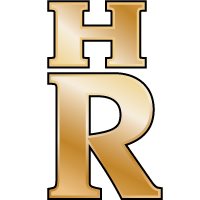I became interested in thinking about navigation within my magazine, as it relates strongly to the idea of communicating a journey. I started looking at train maps, from older underground maps to british rail. I thought that I could use them as inspiration to produce a map for my contents pages, as well as something, which can show you moving through the magazine, on a continuous journey.
Map Research
30 Apr 2013 Leave a comment
in Layout for Print Tags: design, ideas, images, research, Year 2
Redesign Brief
06 Mar 2013 Leave a comment
in Layout for Print Tags: brief, editorial, magazine, planning, research, Year 2
The Heritage Railway magazine reports on news related to the recent developments in steam train locomotives, and ongoing events on heritage railway sites. It has a range of articles and features; from concerns with penalty charges on tour firms, to individual experiences from steam train enthusiasts. It means that it can cater for a wide range of groups; from volunteers who work on the railway sites, to enthusiasts who will attend events and sites around the UK, as well as touring holidays in which to actually experience steam train travel.
The audience for the magazine is predominantly male with ages ranging from 25 – 34 years and 45 – 54 years, with an estimated market of 1,778. There is a very tight community within the readership, shown through the online presence of the magazine, with forums and pages where enthusiasts can share experiences and photos. More
Audience Research
23 Feb 2013 Leave a comment
in Layout for Print Tags: editorial, magazine, research, Year 2
A Story of Steam – Railway Documentary:
I learnt a lot from watching this documentary, and what type of readership the Heritage Railway Magazine attracts. In the film they talked about how steam trains appeal to them:
- Nostalgia: steam trains have a romantic quality to them, due to their history and peoples associations with past events and youth.
- “living thing”: steam trains are individually made, which gives each of them a unique quality, particularly in comparison with mass produced electric and diesel trains. In turn it encompasses an individual aesthetic feel, and is described by enthusiasts to be a “living thing”, in terms of smell, movement, noise.
- Journey/ experience: they have a unique feel, in which people will take trips and go to events, to experience the excitement of steam, which is lost in modern transport nowadays.
Online Presence and Community
- Predominantly Male
- 24–34 yrs and 45–54 yrs
- Workers and Volunteers at heritage sites.
- Enthusiasts– they will attend events and tours related to steam travel.
These forums and pages allow steam train enthusiasts share experiences and photos with each other:
Heritage Railway Magazine Research
22 Feb 2013 Leave a comment
in Layout for Print Tags: editorial, images, magazine, research, Year 2
I decided to buy an early version of the magazine from 1999, in order to compare it with most recent edition which I will be redesigning:
Covers:
- 2013
- 1999
Contents Spreads:
- 2013
- 1999
News Spreads:
- 2013
- 1999
Similarities: masthead design, bold typefaces boxed photos, four column layouts, size
Differences: Colour Palette, full cover photos (2013), thinner paper stock (2013)
I noticed that both issues were very similar, which shows that the design and layout hasn’t really developed from when it was initially published in 1999, and could communicate better to a modern audience.
The most recent magazine is very formal in appearance with a four column layout and small images relating to each article, giving it a newspaper quality. The paper stock is very thin and is fairly translucent.
Magazine Options
18 Feb 2013 Leave a comment
in Layout for Print Tags: editorial, inspiration, magazine, research, Year 2
I decided to look at train magazines, as I am quite interested in the idea of journeys and how to communicate them. These are three magazines I chose to look into, but I was particularly interested in redesigning Heritage Railway Magazine, as I thought there were more problems with this magazine, in terms of its design, as well as its inability to really reflect on the journey and experience of travelling by steam. I thought that Hornby magazine had some interesting aspects, particularly in its use of black and white photos.
Heritage Railway Magazine
- 2013
Hornby Magazine
Materials and Processes Research
12 Feb 2013 Leave a comment
in Design Practice 1 Tags: artists work, design museum, images, inspiration, research, Year 2
Copper
Uses
computers, fridges, microwaves, cars, coins, power cables, electric wires, plumbing fixtures, water pipes, brass furnishings
Raw Material
Only found in small quantities around the world. Found in distorted masses and crystals. Well crystalised specimens are much sought after.
Unusual uses
Copper has been used for sculptures, and water features as it doesn’t corrode in water or air. Also it has been used to make reliefs.
Properties
It’s colour ranges from copper-red to brown. Tarnishes green, sometimes blue, brown, red or black. Second best conductor of electricity after silver. More
Board 1: Unexpected Pleasures
28 Jan 2013 Leave a comment
in Design Practice 1 Tags: design, design museum, ideas, inspiration, research, Year 2
Unexpected Pleasures: Research
20 Jan 2013 Leave a comment
in Design Practice 1 Tags: artists work, design, design museum, drawings, images, research, theory, Year 2
After deciding which pieces I wanted to explore, I produced three drawings:
- Object 1: Ink drawing
- Object 2: Colour pencil drawing
- Object 3: Pencil drawing
Design Museum Brief
16 Jan 2013 Leave a comment
in Design Practice 1 Tags: artists work, design, design museum, images, research, theory, Year 2
The Design Museum Brief is about exploring new and unconventional materials and techniques, in which to create innovative and original design work. More
























